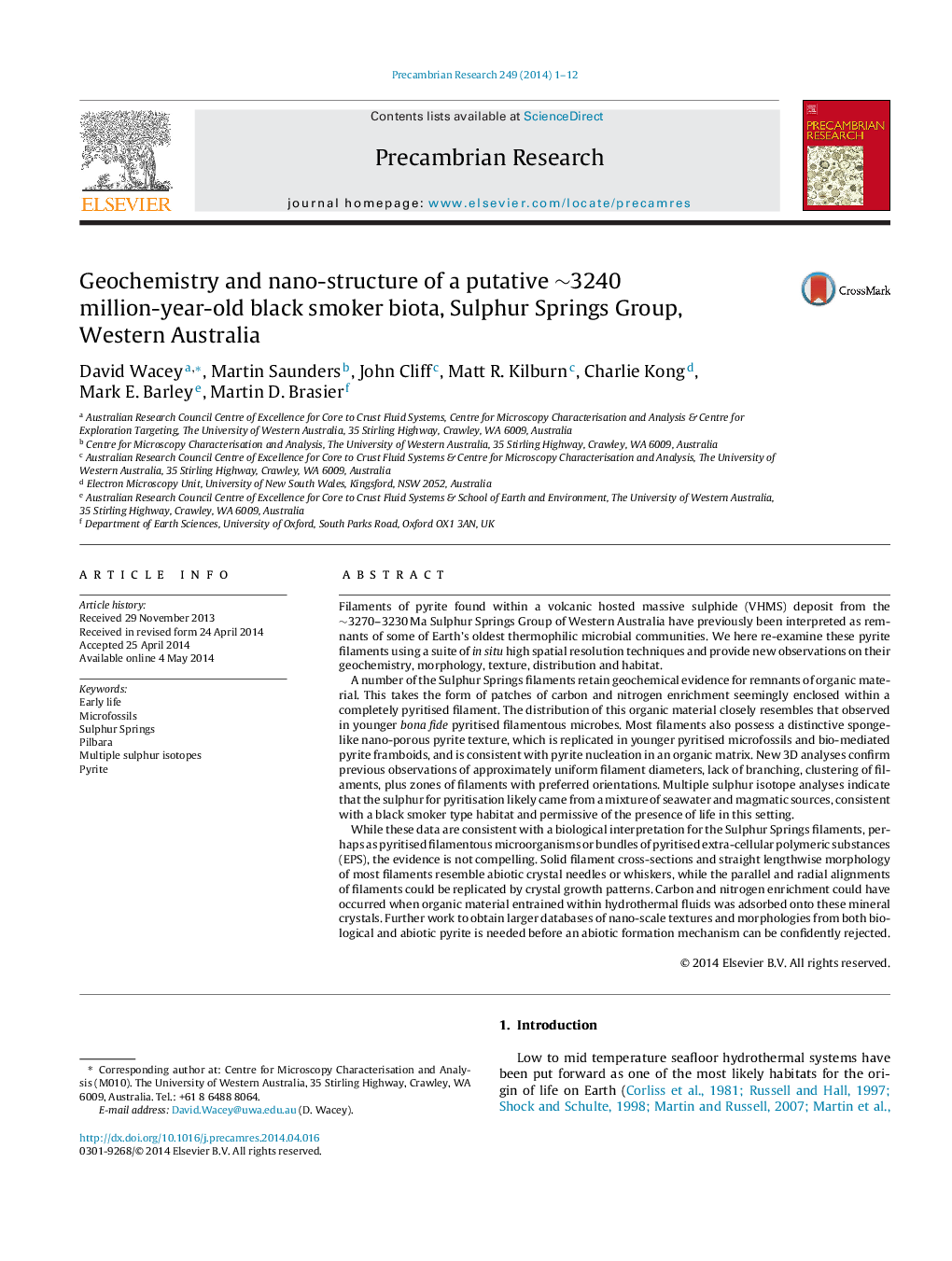| کد مقاله | کد نشریه | سال انتشار | مقاله انگلیسی | نسخه تمام متن |
|---|---|---|---|---|
| 4722992 | 1639625 | 2014 | 12 صفحه PDF | دانلود رایگان |

• We examined 3.25 Ga pyritic filamentous objects at the nano-scale.
• The filaments contain potential chemical, morphological and textural biosignals.
• Bona fide pyritised microfossils from the Gunflint chert exhibit similar biosignals.
• Isotopic data are consistent with a hydrothermal vent setting for the filaments.
• The data are consistent with a biological formation mechanism but not compelling.
Filaments of pyrite found within a volcanic hosted massive sulphide (VHMS) deposit from the ∼3270–3230 Ma Sulphur Springs Group of Western Australia have previously been interpreted as remnants of some of Earth's oldest thermophilic microbial communities. We here re-examine these pyrite filaments using a suite of in situ high spatial resolution techniques and provide new observations on their geochemistry, morphology, texture, distribution and habitat.A number of the Sulphur Springs filaments retain geochemical evidence for remnants of organic material. This takes the form of patches of carbon and nitrogen enrichment seemingly enclosed within a completely pyritised filament. The distribution of this organic material closely resembles that observed in younger bona fide pyritised filamentous microbes. Most filaments also possess a distinctive sponge-like nano-porous pyrite texture, which is replicated in younger pyritised microfossils and bio-mediated pyrite framboids, and is consistent with pyrite nucleation in an organic matrix. New 3D analyses confirm previous observations of approximately uniform filament diameters, lack of branching, clustering of filaments, plus zones of filaments with preferred orientations. Multiple sulphur isotope analyses indicate that the sulphur for pyritisation likely came from a mixture of seawater and magmatic sources, consistent with a black smoker type habitat and permissive of the presence of life in this setting.While these data are consistent with a biological interpretation for the Sulphur Springs filaments, perhaps as pyritised filamentous microorganisms or bundles of pyritised extra-cellular polymeric substances (EPS), the evidence is not compelling. Solid filament cross-sections and straight lengthwise morphology of most filaments resemble abiotic crystal needles or whiskers, while the parallel and radial alignments of filaments could be replicated by crystal growth patterns. Carbon and nitrogen enrichment could have occurred when organic material entrained within hydrothermal fluids was adsorbed onto these mineral crystals. Further work to obtain larger databases of nano-scale textures and morphologies from both biological and abiotic pyrite is needed before an abiotic formation mechanism can be confidently rejected.
Journal: Precambrian Research - Volume 249, August 2014, Pages 1–12